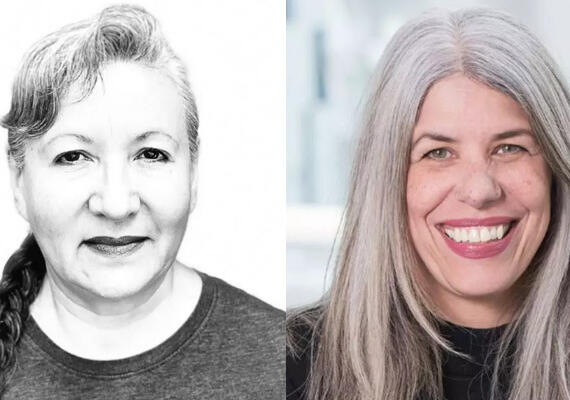
Four Elements Indigenous Framework for UCalgary Nursing
The Elements
We take seriously our responsibility to answer Call #24 from the Truth and Reconciliation Commission’s Calls to Action (2015), calling on nursing schools to teach about the historical and ongoing impacts of colonization on the health and well-being of Indigenous Peoples in Canada.
The Four Elements Indigenous Framework centers Indigenous ways of knowing, doing, connecting, and being; enlivening the ii’taa’poh’to’p conceptual model. Through the ongoing development of the Four Elements curricular themes, we commit to embedding them in our undergraduate and graduate curriculum, faculty development, and taken up collectively, and individually, by our faculty.
Air: Self-In-Relation
Understand self-in-relation to settler colonialism and systems of power and privilege. Identify your roles and responsibilities that extend from your unique cultural inheritances.
Fire: Service & Reciprocity
Practice principles of service and reciprocity for the benefit of Indigenous Peoples, communities and Land.
Earth: Relationships to Land
Unlearn colonial constructs and renew and repair your relationship to Land.
Water: Anti-Indigenous Racism
Recognize the ways that racism shows up in health-care education and practice. Develop skills to disrupt racism and create cultural safety through cultural humility.
About the Four Elements artwork
The Four Elements Design was created by Marlyn Bennett (Wawate Ikwe, Northern Lights Woman) of the Sandy Bay Ojibway Nation, Manitoba. This work reflects the deep connection between Indigenous teachings and the natural world, honoring the cyclical nature of life and existence.
Each of the four circles in this design represents one of the fundamental elements of nature: Earth, Air, Fire and Water. In Indigenous worldviews, these elements are interconnected and form the foundation of life itself. The use of the circle is intentional, symbolizing wholeness, unity, and the cyclical nature of life. As all things flow in a circular path—from seasons to life cycles—the circle holds sacred significance in Indigenous teachings.
This design not only reflects traditional Indigenous knowledge but also integrates the sacred belief that all of life is interconnected and that we, as humans, are stewards of the Earth and its elements. The balanced harmony between the four elements depicted in this piece reminds us of the need to care for, respect and live in balance with the natural world around us.
Commissioned by the Faculty of Nursing at the University of Calgary, the design can be used as a visual representation of how holistic approaches, grounded in Indigenous knowledge, can contribute to healing and well-being.
About the artist
Marlyn Bennett (WaaWaaTe Ikwe | Northern Lights Woman) is a member of the Sandy Bay Ojibway First Nation in Manitoba, known for her research related to Indigenous Child Welfare. Her research focuses on qualitative methods such as photo-voice, narrative inquiry, and digital storytelling, particularly among First Nations youth transitioning from child welfare to adulthood. Marlyn has over two decades of experience in leadership and governance, having served as President of Animikii Ozoson Child & Family Services for 12 years and as a public representative on the Manitoba College of Social Workers. She was a longtime advisory member of the First Nations Canadian Incidence Study (CIS) and a former President of the Elizabeth Fry Society of Manitoba.
Marlyn's academic contributions include her role as an Associate Professor in Social Work and Education at the University of Calgary, where she holds a Tier II Canada Research Chair in Children’s Wellbeing and is a member of the Alberta Children’s Hospital Research Institute. Her previous positions include Director of Research at the First Nations Child and Family Caring Society of Canada and Acting Director in the Master of Social Work Indigenous Knowledge Program at the University of Manitoba.
Outside her scholarly work, Marlyn is an accomplished rock painter and digital designer. She co-owns EB2 Image Design Research, a graphic design company that creates logos, videos, and other media for Indigenous organizations in Manitoba and Ontario. She is also the proud mother of one daughter, Raven Marie.
Conceptual Model
This Four Elements Indigenous Framework for Nursing Education builds on the conceptual model of ii’taa’poh’to’p, UCalgary’s Indigenous Strategy.
The foundational components of the Conceptual Model are based on Indigenous perspectives of the universe, which are governed by constant dynamic cycles of transformation and renewal. From this perspective, transformation and renewal are necessary and ongoing parts of life, evident in the natural world and in all of Creation.
These concepts also point to natural law and the inextricable interconnectedness of the Creator to the cosmos, nature and people; they also capture the innate evolution that is part of growth.
The Conceptual Model emphasizes the conscious evolution, rather than a dramatic revolutionary shift, of our university.
Explore ii' taa'poh'to'p
The University of Calgary's (UCalgary) Indigenous Strategy ii' taa'poh'to'p will guide the UCalgary on its path of transformation and communicate its commitment and responsibility for truth and reconciliation. The strategy will remain a living document within the institution, whereby progress will be monitored and content and direction will be renewed through a process of evaluation and evolution.

Vibrant artwork brings new UCalgary Nursing Indigenous Framework to life
A collaboration between UCalgary colleagues uses Indigenous-made artwork to illustrate the Four Elements Indigenous Framework
